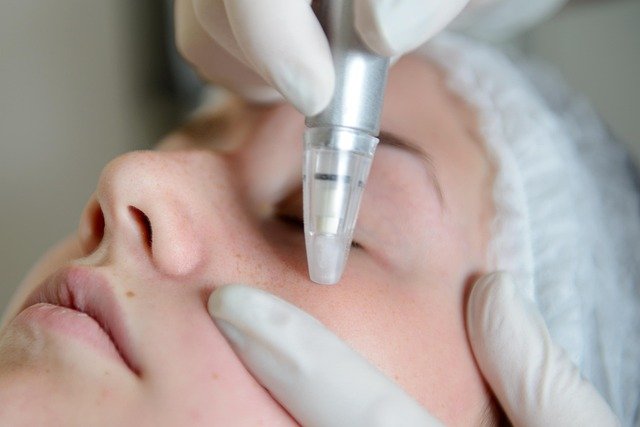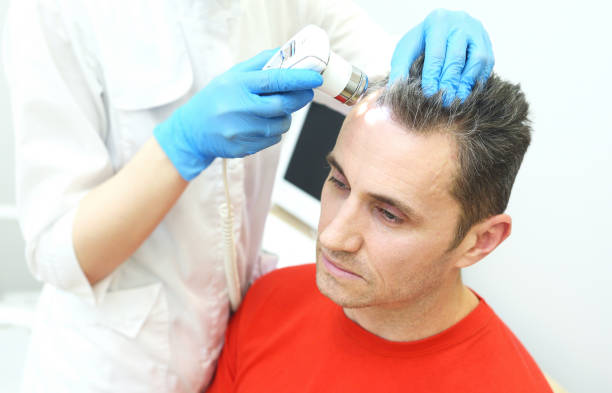Microneedling: Unlocking the Skin's Healing Potential
Microneedling, a minimally invasive cosmetic procedure, has gained significant popularity in recent years as a versatile treatment for various skin concerns. This technique involves creating controlled micro-injuries to the skin using fine needles, stimulating the body's natural healing process and collagen production. Originally developed in the 1990s by Dr. Desmond Fernandes, a South African plastic surgeon, microneedling has evolved from a simple dermaroller device to advanced automated systems. The procedure's ability to address multiple skin issues, from fine lines and wrinkles to acne scars and hyperpigmentation, has made it a go-to treatment for those seeking improved skin texture and appearance without the downtime associated with more invasive procedures.

Types of Microneedling Devices
The microneedling landscape has expanded considerably since its inception. Traditional dermarollers, handheld devices with a roller covered in tiny needles, are now complemented by more advanced options. Automated microneedling pens offer greater precision and adjustability, allowing practitioners to tailor treatments to specific skin concerns and areas. Radiofrequency microneedling devices combine needle punctures with heat energy for enhanced collagen production and skin tightening effects.
Treatment Process and Experience
A typical microneedling session begins with cleansing the skin and applying a topical numbing cream to minimize discomfort. The practitioner then moves the microneedling device across the treatment area, creating thousands of microscopic punctures. The procedure usually takes 30 to 60 minutes, depending on the area being treated. Patients may experience mild redness and swelling immediately after the treatment, but these effects typically subside within a few days. The minimally invasive nature of microneedling allows for relatively quick recovery times compared to more aggressive skin resurfacing treatments.
Addressing Various Skin Concerns
One of microneedling’s greatest strengths is its versatility in treating a wide range of skin issues. For fine lines and wrinkles, the procedure stimulates collagen production, leading to plumper, more youthful-looking skin. Acne scars benefit from the breaking down of scar tissue and the formation of new, healthier skin cells. Hyperpigmentation and sun damage can be improved as microneedling enhances the skin’s ability to absorb topical treatments and encourages the turnover of pigmented cells. Even stretch marks can be addressed, with the treatment promoting the remodeling of damaged skin tissue.
Combining Microneedling with Topical Treatments
The micro-channels created during the procedure provide an opportunity to enhance the absorption and efficacy of topical skincare products. Many practitioners combine microneedling with the application of serums containing growth factors, peptides, or hyaluronic acid to further boost skin rejuvenation. This approach, sometimes referred to as mesotherapy or microchanneling, allows for deeper penetration of active ingredients into the skin, potentially amplifying the overall treatment results.
Safety and Side Effects
When performed by a trained professional, microneedling is generally considered safe for most skin types. However, as with any cosmetic procedure, there are potential risks and side effects to consider. These may include temporary redness, swelling, and sensitivity in the treated area. In rare cases, infection or scarring can occur, particularly if proper sterilization techniques are not followed or if the treatment is too aggressive for the individual’s skin type. It’s crucial for patients to follow post-treatment care instructions carefully to minimize risks and optimize results.
The Rise of At-Home Microneedling
The popularity of microneedling has led to the development of at-home devices marketed as more accessible and cost-effective alternatives to professional treatments. While these products can offer some benefits, they typically use shorter needles and may not provide the same level of results as professional treatments. Additionally, improper use of at-home devices can increase the risk of infection or skin damage. Consumers should approach at-home microneedling with caution and consider consulting a skincare professional before incorporating it into their routine.
Long-Term Benefits and Maintenance
The effects of microneedling are not just immediate but can continue to improve over time as collagen production increases. Many patients report seeing optimal results after a series of treatments, typically spaced 4-6 weeks apart. To maintain the benefits, periodic touch-up sessions may be recommended. The long-term improvements in skin texture, tone, and overall appearance make microneedling an attractive option for those seeking lasting skin rejuvenation without resorting to more invasive procedures.
Future Innovations in Microneedling
As technology advances, the field of microneedling continues to evolve. Researchers are exploring new ways to enhance the treatment’s effectiveness, such as combining it with other energy-based therapies or developing more sophisticated delivery systems for active ingredients. The potential for personalized treatments, tailored to an individual’s specific skin concerns and genetic profile, represents an exciting frontier in the world of microneedling and skin rejuvenation.
In conclusion, microneedling has established itself as a versatile and effective treatment in the realm of non-invasive cosmetic procedures. Its ability to address multiple skin concerns, coupled with minimal downtime and a strong safety profile, has contributed to its growing popularity among both practitioners and patients. As research continues and technology improves, microneedling is likely to remain at the forefront of skin rejuvenation techniques, offering individuals a powerful tool in their quest for healthier, more youthful-looking skin.




